My goal is to generate a circle pack that mimics this: (don't pay attention on numbers, and colors at all, at the moment I am interested in circle positions and radiuses only)

Based on an example from d3js.org, I created this jsfiddle, with result:

I tried circle pack layouts, but results were even worse, lots of empty space...
How can I get something that looks like the first pic?
EDIT: This example seems closer to what I want, I just noticed.
EDIT 2: Inspired by @AmeliaBR idea, codepen. Not yet final. Preview:

Then I decreased max radius:

The latest and greatest: max rad 12 min rad 3
